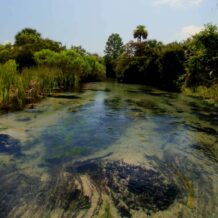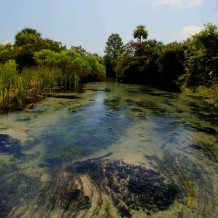health and science
Juniper Springs
Monitoring events have shown that Juniper has seen some nitrate increases. However, the 2009 USGS study discussed above determined that the increase was typical of the amounts stemming from atmospheric deposition. As we know most of our air is composed of nitrogen and that nitrogen naturally precipitates out of the atmosphere. Therefore, a big picture view of the health and life of springs, including all parameters, is needed to figure out ways to protect, preserve and revere the springs. St. John’s River Water Management District and Florida Department of Environmental Protection have partnered and coordinated with a wide variety of agencies and institutions to develop the knowledge base necessary to slice our future water supply pie.
Numerous studies and monitoring data are available regarding Juniper Springs. Many people contend, and I agree, that the health of our springs depends on people having a strong connection and ownership of the springs as core element of our heritage, of our state and of our home. A priority for springs protection will ultimately come from the heartfelt sentiment of the people. Some say there have been enough studies and we don’t need more studies. Yet strong, valid and current science is needed now and in the future to make the case for a shifting definition of what is reasonable and beneficial.




